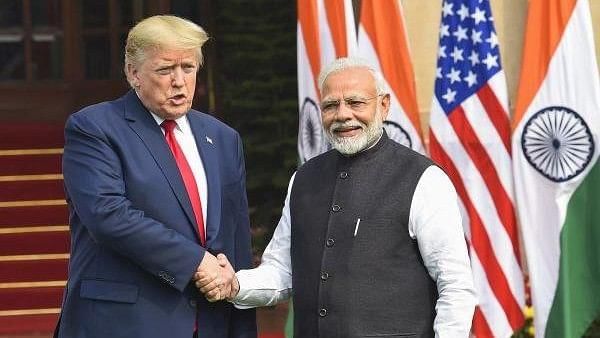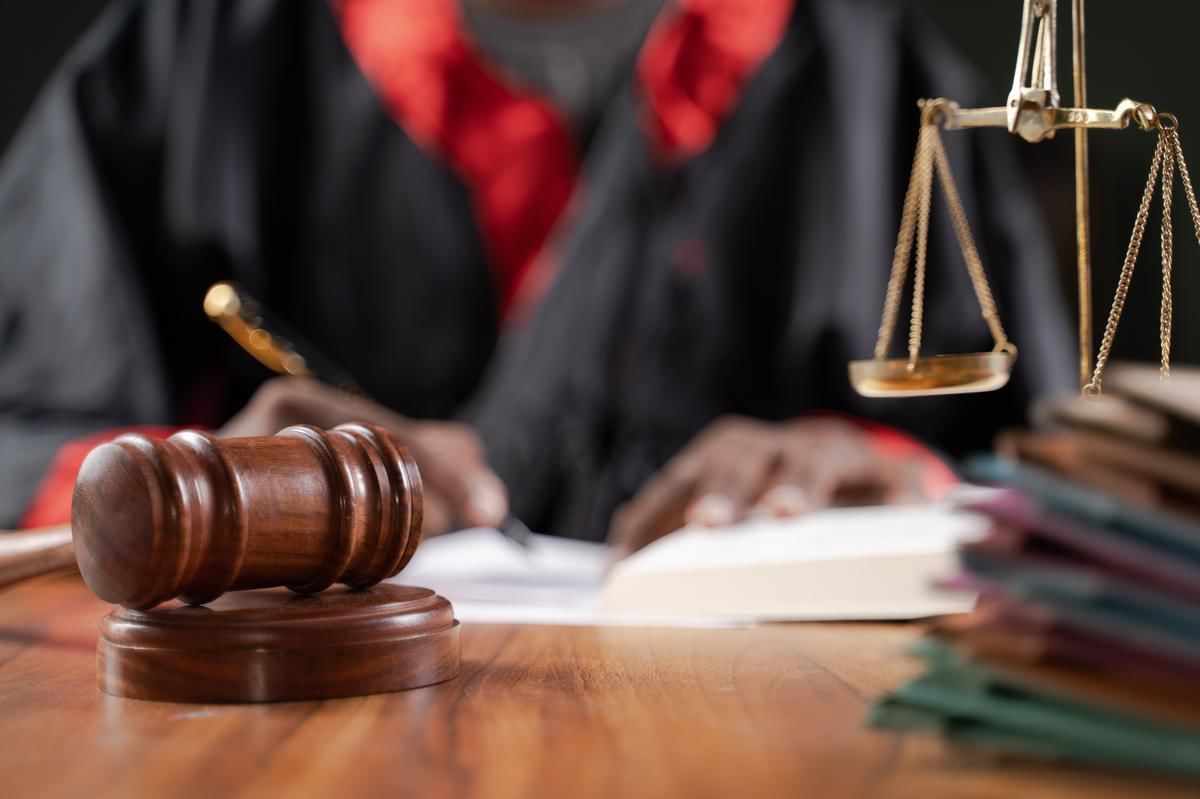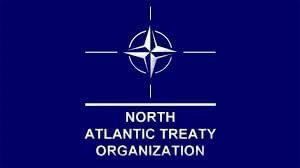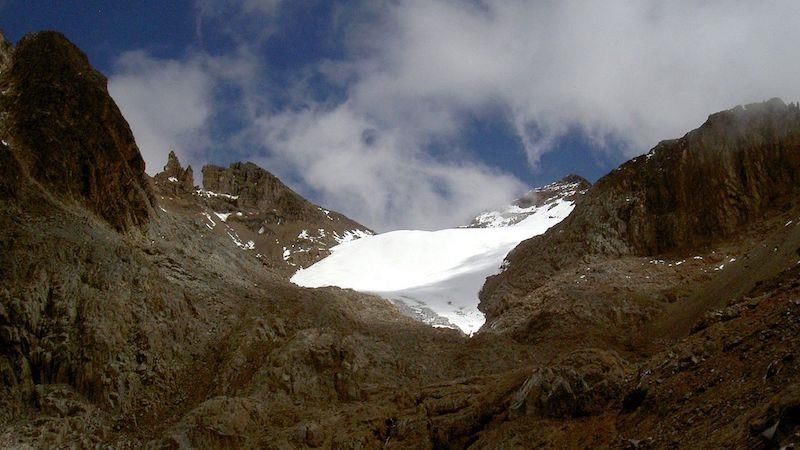UPSC Daily Current Affairs: 28th March 2025 | Current Affairs & Hindu Analysis: Daily, Weekly & Monthly PDF Download
GS3/Defence & Security
U.S. Defence Ties; India Needs to Keep Its Eyes Open
 Why in News?
Why in News?
The Indian defence sector is currently facing critical challenges as it navigates the balance between indigenous production and strategic foreign partnerships, particularly in light of its reliance on U.S. technology and potential over-dependence on American defence systems.
- India is the world's second-largest arms importer, with ongoing reliance on foreign suppliers despite efforts to boost indigenous production.
- The U.S.-India defence partnership offers technological advancements, but concerns about reliability and strategic autonomy remain.
- India must diversify its defence sources to avoid over-dependence on any single country.
Additional Details
- Defence Procurement: India has seen a 9.3% reduction in arms imports from 2015–2019, yet it continues to procure high-tech systems from abroad, notably from the U.S. and Russia.
- Strategic Partnerships: Agreements like the Defence Technology and Trade Initiative (DTTI) promise technology transfers, but the unpredictability of U.S. foreign policy raises concerns about long-term reliability.
- Indigenous Efforts: Despite investments in indigenous aircraft such as the Tejas Mk1A and AMCA, the IAF's operational capabilities remain partially dependent on U.S. engines.
- Comparative Analysis: Unlike the U.S., Russia has been a stable supplier for India, providing crucial systems like the Sukhoi Su-30 and S-400, highlighting the need for a balanced approach in partnerships.
- Strategic Autonomy: India must enhance its indigenous defence manufacturing, focusing on technology transfer that includes intellectual property rights and local production capabilities.
In conclusion, India's defence strategy must strike a balance between fostering indigenous capabilities and engaging in strategic partnerships. By prioritizing self-sufficiency and cautious partnership negotiations, India can enhance its defence future while safeguarding its strategic autonomy.
GS3/Defence & Security
Nag Anti-Tank Missile System (NAMIS)
 Why in News?
Why in News?
The Defence Ministry has recently finalized contracts worth ₹2,500 crore for the development and production of the Nag Anti-Tank Missile System (NAMIS) and light vehicles. This initiative is aimed at enhancing the country's defense capabilities, particularly in anti-tank warfare.
- The NAMIS is a tracked version of the Nag Anti-Tank Guided Missile (ATGM) mounted on a BMP-2 chassis.
- It features advanced technology, including a third-generation 'fire-and-forget' missile capability.
- Designed to effectively engage and destroy heavily armored enemy tanks, including those with composite and reactive armor.
- Equipped with night-strike capability for operations in low visibility conditions.
Additional Details
- Attack Modes:
- Top Attack Mode: The missile ascends after launch and strikes from above, targeting the vulnerable top armor of tanks.
- Direct Attack Mode: The missile flies at a lower altitude, directly hitting the target.
- Range: The effective range of NAMIS is between 500 meters to 4 kilometers.
- NAMICA: The Nag Missile Carrier is based on the Russian-origin BMP-2 Infantry Fighting Vehicle and has amphibious capabilities, allowing it to operate across various terrains.
- Other Versions: The Helina, a helicopter-launched variant of the Nag ATGM, was successfully tested in 2018 for deployment on Rudra and Light Combat Helicopters (LCHs).
The development of NAMIS is a significant step forward for India's defense technology, enhancing its capability to counter armored threats effectively. The integration of advanced systems like the Imaging Infrared (IIR) seeker and versatile attack modes reflect a commitment to modernizing the Indian armed forces.
GS3/Economy
India's E-Retail Market Surpasses US at $60 Billion, but Growth Slows in 2024
 Why in News?
Why in News?
India's e-commerce market has achieved a significant milestone, reaching $60 billion in gross merchandise value (GMV), positioning it as the world's second-largest online shopper base. GMV represents the total value of merchandise sold over a specific period through customer-to-customer (C2C) exchange platforms. However, growth has slowed to a range of 10-12% in 2024, a decline from the historic growth rate of 20%, primarily due to rising inflation and stagnant real wages, as reported by Flipkart and Bain.
- India's e-commerce market value reaches $60 billion.
- Growth rate declines to 10-12% in 2024 from over 20% historically.
- Long-term prospects remain positive, driven by key trends.
Additional Details
- Government Initiatives: The Indian government has enacted several key initiatives such as Digital India, Make in India, Start-up India, and Skill India, which are vital in fostering e-commerce growth.
- The Government e-Marketplace (GeM) has exceeded ₹4 lakh crore GMV in FY24, enhancing procurement efficiency across sectors.
- Efforts to expand e-commerce access include collaborations like CSC-ONDC (Open Network for Digital Commerce) aimed at reaching rural areas.
- The National Retail Policy emphasizes digitization and improving the ease of doing business, while foreign direct investment (FDI) in B2B e-commerce is now permitted up to 100%.
- Regulatory measures such as the Consumer Protection (E-commerce) Rules 2020 seek to ensure fair competition in the market.
- Expansion of 5G technology is anticipated to enhance digital commerce adoption.
Despite recent slowdowns in private consumption growth—from 11% (2017-19) to 8% (2022-24)—due to inflation and stagnant wages, e-retail is expected to rebound. Fiscal and monetary policy interventions are projected to stimulate e-retail growth, particularly from the festive season in 2025. By 2030, the market is estimated to expand to between $170 billion and $190 billion, with an annual growth rate exceeding 18%. As India's GDP per capita rises above $3,500-$4,000, discretionary spending is anticipated to increase, with nearly 1 in 10 retail dollars likely to be spent online. Growth is particularly expected in high-frequency categories such as grocery, lifestyle, and general merchandise, which will account for two-thirds of total online spending by 2030. E-retail penetration in these segments is forecasted to grow 2-4 times during this period.
Online shopping trends are now shifting toward Tier-3 and smaller cities, with 60% of new shoppers since 2020 emerging from these regions. Notably, the Northeast has seen a 1.2 times higher e-retail penetration compared to the rest of India, and 60% of new sellers since 2021 are also originating from Tier-2 or smaller cities, diversifying the seller landscape.
Quick commerce is rapidly expanding, especially in e-grocery, comprising two-thirds of orders and 10% of total e-retail spending. It is projected to grow over 40% annually until 2030, branching into new categories and regions. Furthermore, trend-first commerce, especially in fashion, is expected to quadruple, reaching $8-$10 billion by 2028, with over half of sales occurring online. Hyper-value commerce, which focuses on offering ultra-low-priced products, has grown from 5% of e-retail GMV in 2021 to over 12% in 2024, appealing to cost-conscious consumers in smaller cities.
GS3/Economy
India BioEconomy Report
Why in News?
The India BioEconomy Report has projected that the value of India's bioeconomy will exceed $165 billion in 2024, representing over 4.2% of the country's GDP.
- India's bioeconomy value has nearly doubled from $86 billion in 2020.
- There has been a 90% increase in the number of companies in the bioeconomy sector, from 5,365 in 2021 to 10,075 in 2024.
- Key sectors include biofuels, pharmaceuticals, and research & IT.
Additional Details
- What is Bioeconomy? Bioeconomy encompasses the industrial utilization of biological resources such as plants, animals, and microorganisms, along with the replication of natural biological processes to create goods and services. It aims to implement sustainable methods that supersede traditional, resource-intensive production systems.
- Applications: Significant applications of bioeconomy include biofuels, bioplastics, medicines, and synthetic biology. For example, ethanol derived from microorganisms using crops like sugarcane and corn exemplifies bioeconomy's impact in reducing dependency on fossil fuels.
- Key Sectors:
- Industrial Sector: Contributes nearly $78 billion, primarily driven by biofuels and bioplastics.
- Pharmaceuticals: Represents 35% of the total bioeconomy value, largely propelled by vaccine development.
- Research and IT: This segment is the fastest-growing, particularly in biotech software development and clinical trials.
- Regional Contribution: States such as Maharashtra, Karnataka, Telangana, and Gujarat account for over two-thirds of the bioeconomy value, while the Northeastern regions contribute less than 6%.
- Global Comparison: India's bioeconomy share of GDP is comparable to that of the US and China, although countries like Spain and Italy have bioeconomies contributing more than 20% of their GDP.
- Policy Direction: The BioE3 policy (Biotechnology for Economy, Environment, and Employment) aims to position India as a global hub for bio-manufacturing and a leading center for biotech research and development, focusing on areas such as bio-based chemicals, functional foods, precision biotherapeutics, marine and space biotechnology, and climate-resilient agriculture.
In conclusion, the India BioEconomy Report highlights significant growth and potential in the bioeconomy sector, emphasizing its importance for sustainable development and economic growth.
Consider the following materials:
- Agricultural residues
- Corn grain
- Wastewater treatment sludge
- Wood mill waste
Which of the above can be used as feedstock for producing Sustainable Aviation Fuel?
- (a) 1 and 2 only
- (b) 3 and 4 only
- (c) 1, 2, 3 and 4
- (d) 1, 3 and 4 only
GS2/Polity
The Judiciary’s ‘Between a Rock and Hard Place’ Moment
 Why in News?
Why in News?
The case involving Justice Yashwant Varma has become a focal point in discussions about judicial integrity and the influence of government on judicial appointments in India. This incident, triggered by a suspicious fire at Justice Varma's residence, escalated into a national debate regarding the independence of the judiciary and the potential corruption embedded within its ranks.
- The incident involved the discovery of burnt currency notes, raising questions about the source of the money.
- The case has reignited discussions on the National Judicial Appointments Commission (NJAC) and its implications for judicial independence.
- Judicial corruption and the lack of accountability mechanisms in the judiciary are significant concerns highlighted by this case.
Additional Details
- Incident Overview: A fire at Justice Varma's residence led to the discovery of large amounts of burnt ₹500 notes, sparking public outrage and subsequent investigations.
- Government's Role: The government has been accused of attempting to exert control over judicial appointments, particularly in light of the NJAC discussions, which aim to include government representatives in the appointment process.
- Concerns about Judicial Independence: There are fears that reinstating the NJAC would compromise the impartiality of the judiciary by placing it under political influence.
- Judicial Complaints Commission (JCC): The need for a JCC is emphasized as a means to establish an independent body for investigating complaints against judges, promoting accountability and transparency.
- Impeachment Challenges: The current impeachment process for judges is impractical and influenced by political considerations, highlighting the need for reform.
The Justice Yashwant Varma case underscores the vulnerabilities within the judiciary and the ongoing attempts by the government to control it. The situation points to an urgent need for reforms to ensure judicial independence and integrity, as any compromise in this area poses a serious risk to the foundations of democracy in India.
GS2/Polity
Legal Difference Between Preparing for Rape and Attempting the Crime
 Why in News?
Why in News?
The Supreme Court has intervened by staying an Allahabad High Court ruling that downgraded charges against three accused from attempted rape to mere preparation, labeling the judgment as insensitive.
- The High Court removed attempted rape charges and redirected the trial under lesser offences, including IPC Section 354B and Sections 9/10 of the POCSO Act.
- The case emphasizes the critical legal distinction between "preparation" (typically not punishable) and "attempt" (criminally punishable), which warranted Supreme Court intervention.
Additional Details
- Distinction Between 'Preparation' and 'Attempt': The distinction highlights that preparation is merely a stage preceding the attempt, while an attempt involves concrete steps toward committing the crime.
- Legal Criteria for 'Attempt': In the case of Abhayanand Mishra v. State of Bihar (1961), the Supreme Court established that for an attempt to be proven, the accused must have the intention to commit the offence and take actions toward doing so.
- Key SC Ruling: The Supreme Court ruled in State of Maharashtra v. Mohd. Yakub (1980) that "attempt begins where preparation ends," meaning an accused cannot be punished for mere preparation without an overt act leading to the crime.
- The Allahabad High Court's ruling stated that the prosecution failed to demonstrate that the offence progressed beyond preparation, citing a lack of evidence for concrete steps towards the crime.
- Reduced Charges and Punishment: The High Court determined that the accused could only be charged under Section 354B IPC, which carries a punishment of 1-5 years in prison, rather than attempted rape under the IPC and POCSO Act.
This case not only sheds light on the application of legal principles in attempted rape cases but also presents an opportunity for the Supreme Court to reconsider the legal standards surrounding such serious offences.
GS2/International Relations
North Atlantic Treaty Organisation (NATO)
 Why in News?
Why in News?
NATO has recently clarified its statement regarding the status of four missing U.S. soldiers in Lithuania, emphasizing that the search for them is ongoing. Initial confusion arose when NATO Secretary-General Mark Rutte suggested that the soldiers had died; however, NATO later clarified that he was referring to unverified news reports rather than confirming their fate.
- The soldiers were part of the U.S. Army’s 1st Brigade, 3rd Infantry Division.
- They were conducting training exercises near Pabradė, Lithuania, close to the Belarus border.
- Their armored vehicle has been found submerged in water, and recovery efforts are currently underway.
Geopolitical Context
- Regional Tensions: Lithuania, Latvia, and Estonia are NATO members with strained relations with Russia and Belarus.
- Russia's invasion of Ukraine in 2022 has exacerbated regional security dynamics, leading to increased military exercises and NATO's presence in the Baltic region.
- Belarus, a close ally of Russia, shares borders with Lithuania, Latvia, and Poland, making NATO operations in these areas strategically significant.
About NATO (North Atlantic Treaty Organization)
| Aspect | Details |
| Founded | 1949, with the signing of the North Atlantic Treaty (Washington Treaty) to counter Soviet expansion in post-World War II Europe. |
| Headquarters | Brussels, Belgium |
| Nature | Military & political alliance comprising 32 countries from Europe & North America |
| Core Principle | Collective Defense (Article 5): An attack on one NATO country is considered an attack on all. This principle was invoked only once after the 9/11 attacks in 2001. |
| Founding Members (12) | Belgium, Canada, Denmark, France, Iceland, Italy, Luxembourg, Netherlands, Norway, Portugal, UK, USA. |
| Latest Expansion | Sweden joined NATO in 2023. |
| Ukraine's NATO Bid | Ukraine applied for NATO membership in 2022 and received security assurances at the Vilnius Summit in 2023. |
| Non-NATO EU Members | Austria, Cyprus, Ireland, and Malta. |
This clarification from NATO highlights the ongoing complexities of military operations in regions with heightened geopolitical tensions and underscores the importance of accurate communication during crisis situations.
GS3/Economy
Farewell to the Equalisation Levy - A Bold Move in Global Taxation
 Why in News?
Why in News?
The government has proposed the abolition of the 6% Equalisation Levy on online advertising in the Finance Bill 2025. This decision aims to reduce the tax burden on digital ad consumers and lower costs on platforms like Google and Meta. This significant move comes amid the ongoing Indo-US bilateral trade talks and the imminent threat of reciprocal tax, which is set to take effect from April 2, 2025. If the bill is passed in parliament, the Equalisation Levy would cease to exist from April 1, 2025.
- The Equalisation Levy was introduced in 2016 to tax online advertising revenues earned by foreign companies in India.
- Concerns over double taxation led to opposition from multinational digital corporations.
- The global landscape lacks consensus on digital taxation, with initiatives like OECD's BEPS proving insufficient.
- The US has historically opposed unilateral taxation measures, leading to trade tensions with India.
Additional Details
- Origins of the Equalisation Levy: The levy was introduced in 2016 through the Finance Act to avoid treaty override and aimed at taxing foreign digital companies operating in India.
- Global Taxation Landscape: Despite efforts to close loopholes, international consensus on digital taxation remains elusive, highlighted by the OECD's BEPS initiative.
- US Opposition: In 2020, the US labeled India’s levy as discriminatory, prompting retaliatory threats and the withdrawal of a similar 2% levy on digital services.
- Impact and Future of Digital Taxes: In 2022, India collected ₹40 billion from the levy, but critics argue that the tax burden was ultimately passed on to consumers.
The withdrawal of the Equalisation Levy marks the end of India's attempt to tax digital giants amidst a lack of global consensus. While the levy was an effective measure for fair taxation, geopolitical pressures, especially from the US, played a significant role in its repeal. This episode underscores the complexities of international tax diplomacy, as developing nations like India navigate their economic interests while asserting sovereignty. As global negotiations continue, the future of digital taxation remains uncertain, but India's pioneering approach has set a precedent for alternative taxation models beyond OECD frameworks.
GS2/Governance
Regulation of Online Content through SAHYOG Portal
 Why in News?
Why in News?
Social media platform X has raised concerns in the Delhi High Court, stating it cannot be compelled to join the government’s SAHYOG portal, which may lead to the misuse of online content regulation.
- The SAHYOG portal aims to streamline the identification and removal of unlawful online content.
- It connects government agencies with online intermediaries for automated removal notifications.
Additional Details
- SAHYOG Portal: This initiative by India’s Ministry of Home Affairs facilitates communication between law enforcement and social media platforms to ensure quick action against unlawful content.
- Government Justification: The government claims SAHYOG enhances law enforcement efficiency by allowing swift coordination to remove harmful content, especially during critical situations like communal riots.
- Legal Obligations: Under Section 79(3)(b) of the IT Act, intermediaries must remove content upon government notification to maintain their safe harbor protection.
- Real-Time Action: The Delhi High Court emphasized the need for real-time content removal mechanisms to handle urgent cases, such as child exploitation.
Challenges Faced by Social Media Platforms
- Independent Mechanism: X argues it has its own system for processing legal requests and should not be forced into the SAHYOG portal.
- Legal Concerns: The portal may create a parallel content removal system lacking the safeguards of Section 69A of the IT Act.
- Censorship Risks: There are fears that the portal could enable unchecked censorship by allowing multiple officials to issue takedown orders without oversight.
Comparison of Legal Provisions
- Section 79(3)(b): Intermediaries must act on court or government orders when they have actual knowledge of illegal content.
- Section 69A: The government can directly block content threatening national security or public order.
- Takedown Orders: Issued based on court orders or government notifications; Section 69A processes are confidential and lack transparency.
Key Stakeholders
- Government Authorities: The Ministry of Home Affairs is responsible for the SAHYOG portal’s implementation.
- Social Media Platforms: Companies like X Corp are directly affected and have raised legal challenges against the portal.
- Judiciary: The Delhi High Court oversees disputes arising from the SAHYOG portal and encourages collaboration between law enforcement and intermediaries.
Judicial Precedents
- Shreya Singhal vs Union of India: This ruling struck down Section 66A of the IT Act as unconstitutional due to its vagueness, while upholding Section 69A with required due process.
- Implications for SAHYOG: The absence of opportunity for content creators to challenge takedowns could violate established legal principles.
In conclusion, while the SAHYOG portal aims to enhance the efficiency of law enforcement in combating unlawful online content, it raises significant concerns regarding freedom of speech, potential censorship, and the need for judicial oversight. Moving forward, ensuring transparency and accountability in its implementation is essential to align with constitutional rights.
GS3/Environment
Mount Kenya: The Impact of Climate Change on Glaciers
 Why in News?
Why in News?
Climate change is significantly accelerating the melting of glaciers on Mount Kenya, which is the second-highest mountain in Africa, following Kilimanjaro. Recent studies highlight alarming trends regarding the glaciers on this iconic peak.
- The Lewis Glacier has experienced substantial shrinkage, with projections indicating that Mount Kenya could be entirely ice-free by 2030.
- A 2011 study from Austria's University of Innsbruck revealed that the Lewis Glacier lost approximately 90% of its volume between 1934 and 2010.
- According to a 2023 satellite study, only 4.2% of the ice that was present in 1900 remains today.
Additional Details
- Location: Mount Kenya is situated in central Kenya, just south of the Equator.
- Elevation: The highest peak, known as Batian, rises to an elevation of 5,199 meters (17,058 feet).
- UNESCO World Heritage Site: It was designated a UNESCO World Heritage Site in 1997 due to its ecological and cultural significance.
- Geological Origin: Mount Kenya is classified as a long-extinct stratovolcano that has been heavily eroded over time.
- Glaciers: The mountain is home to the Lewis Glacier and Tyndall Glacier, which are among Africa's last remaining tropical glaciers.
The ongoing loss of glaciers on Mount Kenya serves as a stark reminder of the broader impacts of climate change, not only on local ecosystems but also on global environmental conditions.
GS3/Science and Technology
India’s Push into the Deep Sea: A Strategic and Economic Imperative
Why in News?
Recently, India achieved a significant milestone by completing the wet testing of its Matsya-6000 submersible, which is capable of diving up to 6 kilometers below the ocean's surface. This initiative aims to explore underwater minerals along India's coastline. India is advancing its capabilities in deep-sea exploration with the Matsya-6000 submersible.
- Deep-sea exploration is crucial for economic development, national security, and technological advancement.
Additional Details
- Deep Ocean Mission: This initiative aims to position India alongside a select group of nations with human-rated submersibles capable of operating at extreme depths.
- Strategic Importance: The deep sea is vital for accessing resources like polymetallic nodules and gas hydrates, essential for India’s industrial growth.
- National Security Concerns: As countries like China advance in underwater technology, India must enhance its deep-sea capabilities to safeguard its interests.
In conclusion, India's ambition to strengthen its economic and strategic position on the global stage necessitates a robust commitment to deep-sea exploration. The Matsya-6000 is just the beginning; India must accelerate its efforts to build a comprehensive and well-funded deep-ocean capability to meet future challenges and opportunities.
GS2/Polity
Section 44(3) of the DPDP Act
Why in News?
The opposition parties have expressed significant concerns regarding the Digital Personal Data Protection (DPDP) Act, 2023, particularly questioning the implications of Section 44(3). They argue that this section could potentially undermine the Right to Information (RTI) Act, 2005.
- The DPDP Act was introduced to recognize the right to privacy as a fundamental right in India.
- Section 44(3) modifies the RTI Act, broadening exemptions for personal information disclosure.
- Critics claim this could lead to reduced transparency and accountability in governance.
Additional Details
- DPDP Act: The DPDP Act regulates the processing of personal data, aiming to balance individual privacy rights with lawful processing needs. Key provisions include the requirement for informed consent and the establishment of a Data Protection Board of India (DPBI).
- Amendment to RTI Act: The amendment to Section 8(1)(j) of the RTI Act previously allowed for the exemption of personal information from disclosure if public interest was justified. The new amendment states that all personal information is exempt from disclosure, irrespective of public interest.
- Concerns Raised: Activists argue that Section 44(3) could reduce transparency, limit access to public information, and potentially be misused to block critical information about government activities.
- Conflict of Interests: Critics emphasize that the protection of privacy should not overshadow the essential principle of transparency in governance.
In conclusion, the ongoing debate around Section 44(3) of the DPDP Act highlights the tension between protecting personal data and ensuring public accountability. This issue remains crucial for citizens' rights and governance in India.
|
44 videos|5250 docs|1108 tests
|
















